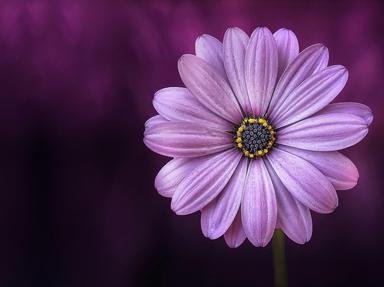Quiz Answer Key and Fun Facts
1. 'Punica granatum' is a small fruit-bearing tree that was regarded as a symbol of prosperity and ambition by the Ancient Egyptians. The floral emblem of Libya, which fruit is produced by this tree?
2. This flowering plant that is also sometimes known as a sugarbush is specially adaptive to survive wildfires, its thick stem containing dormant buds that produce new growth after the fire has passed. It is the national flower of South Africa, whose international cricket team play under its name. which plant species is this?
3. The spectacular but difficult to grow 'Meconopsis grandis' first appeared in the UK at the Royal Horticultural Society's 1926 spring show. Discovered by climbers on their way to challenge Everest, it is the official floral emblem of Bhutan. Which type of flower is this?
4. 'Nelumbo nucifera' is an aquatic perennial whose seeds can remains viable for hundreds of years. Native to Queensland, Australia and parts of tropical Asia, it is the national floral emblem of both India and Vietnam. Which plant species is this?
5. This is 'Anemone coronaria', a herbaceous perennial plant species native to the Mediterranean region. In 2013, it was chosen to replace the Persian cyclamen as the official floral emblem of Israel. By what western European-sounding name is it sometimes known?
6. This particular species was named after a 19th-century German doctor, botanist and traveller. Unlike many other related species, which flower in early spring, this large shrub waits until summer. Native to eastern Asia, it is the official floral emblem of North Korea. What type of plant is this?
7. 'Cassia fistula' is a flowering plant popular in ornamental gardens that is also used in herbal medicine. It is both the national tree and produces the national flower of Thailand. What type of plant is this?
8. Sometimes called the bluebottle, 'Centaurea cyanus' is a flowering plant native to Europe. It has become endangered by habitat loss due to the use of herbicides. Symbolizing the 'daily bread' to local people, in 1968 it became the official floral emblem of Estonia. What type of plant is this?
9. Native to North Africa, flowers from the pictured 'Iberis gibraltarica' range from pale violet to almost white. Part of the mustard and cabbage family, this is the official national emblem of Gibraltar, the only place in Europe where it can be found growing naturally. What type of plant is this?
10. Our final species is a tree native to northern South America and the Caribbean. A particularly slow-growing tree, it produces bright-yellow-orange fruit with red flesh and black seeds in addition to its striking blue flowers. The national floral emblem of Jamaica, which type of tree produces this flower?
Source: Author
EnglishJedi
This quiz was reviewed by FunTrivia editor
WesleyCrusher before going online.
Any errors found in FunTrivia content are routinely corrected through our feedback system.

